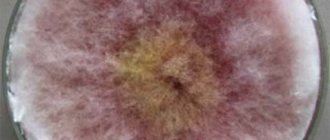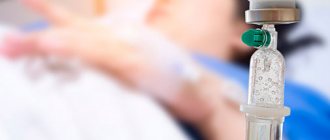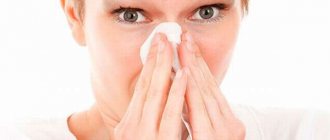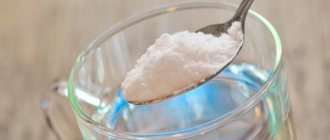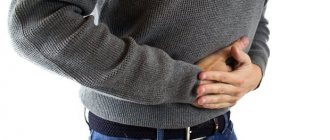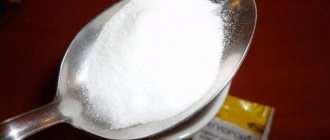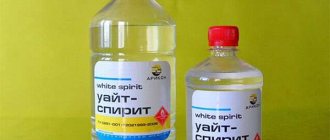Almost every person can remember one or more situations in life when, after taking drugs or inhaling unfamiliar aerosols, he felt ill. Some simply witnessed the poisoning of loved ones with unfamiliar substances. But not everyone can boast of knowledge of emergency care for themselves or another person during the development of such a problem.
How should you act in case of poisoning? In addition to the necessary knowledge about the necessary actions, you also need first aid equipment, which should always be at hand! This will be discussed today.
What is detoxification therapy
A slightly scary term is detoxification, which refers to the destruction or neutralization of harmful toxic substances by various methods. These are chemical, biological or physical methods of inactivating substances. That is, in other words, detoxification is a method of treating acute or chronic poisoning.
To resolve the issue of neutralizing substances entering the body, you should first try to answer a number of questions:
- what the injured person could take;
- time of administration, exposure;
- dose of substance;
- the route of entry of poison into the human body.
Despite the fact that in real life there is no time to collect information, you need to act with lightning speed, trying to find answers to each of the above points. This is the only way to save a life. But often treatment has to begin immediately.
Methods by which detoxification is carried out
There are several classifications. The most common detoxification is divided into:
- to natural or natural;
- artificial, created by man.
Artificial methods of neutralization, in turn, are also divided into:
- physical;
- chemical;
- biological.
Each of the proposed ways of removing harmful substances is further divided into subsections.
In addition, the following detoxification methods can be distinguished:
- medicinal , for which special drugs are used - antidotes, sorbents or antioxidants;
- non-drug , examples include hemodialysis, plasmapheresis;
- when the two above methods are combined, we are talking about combined detoxification .
Let us consider some types of destruction of toxic drugs in more detail.
Mechanisms of natural detoxification
These mechanisms work in our body every day, without interruption, recognizing, binding and removing unnecessary components for humans. These include the following natural detoxification mechanisms.
- The liver defense system is the cytochrome oxidase barrier. This is the general name for a group of liver enzymes that enhance the chemical reactions of breaking down foreign drugs, spoiled or aggressive (spicy, fatty) products that have entered the gastrointestinal tract.
- Immune cells also neutralize harmful substances, which include viruses, bacteria and other structures foreign to the body. Thanks to blood cells, they are captured and excreted.
- What is natural excretory detoxification of the body? This is the work of all organs and systems together. The skin, lungs, liver, kidneys, working harmoniously, constantly remove waste products into the external environment.
Indications
ARAVIA Professional detoxifying tonic Detox Sensitive, suitable for all skin types, recommended for use for:
- The presence of symptoms of the negative effects of free radicals, weakening of skin capillary walls, destabilization of pH balance.
- Withering, deterioration of the color and structure of the skin.
- Pollution of pores.
- Unsatisfactory indicators of skin moisture.
- The need to prepare the skin for intensive care.
Artificial detoxification methods
Methods of artificial detoxification include the use of special medications, washing the body and so-called filtration techniques, carried out only in a hospital.
Physical methods of cleansing the body
Anyone can carry out such methods of neutralization even at home. This is first aid to a person or to oneself, which can be carried out with improvised means without special training and medical supplies. How can you help the victim before the ambulance arrives?
- Routine washing of the skin and eyes with running water or saline solution if substances come into contact with the mucous membrane of the eye or the skin.
- If the person is conscious, you should immediately rinse the stomach with warm water and induce vomiting. To do this, you need to drink at least 3-5 liters of liquid at room temperature. Health care workers administer at least 12-15 liters of water through the tube.
- In case of inhalation poisoning, detoxification therapy begins with removing the victim to the open air. Then you should lay him down and free him from the tight tie, unbutton his shirt or blouse, and ensure the airway is clear. Next, emergency doctors will, if necessary, perform tracheal intubation (an incision in the neck in the area where the trachea passes, followed by insertion of a tube to eliminate the possibility of suffocation due to swelling of the laryngeal mucosa) or oxygen inhalation.
In other cases (if the person is unconscious or creates obstacles to first aid), trust the professionals. In the hospital, in addition to the above-mentioned procedures, they also do a cleansing enema to wash the intestines.
Physical detoxification methods also include:
- hemodialysis;
- hemoperfusion;
- peritoneal dialysis;
- plasmapheresis.
Plasmapheresis
Plasmapheresis is one of the well-known methods of blood purification. The essence of this procedure is to extract blood, which is separated into plasma and formed elements in special devices.
Blood cells are returned back to the human body, and instead of plasma, solutions are introduced to replace it. So, they can purify up to one and a half liters of plasma.
This is the simplest and most effective detoxification method.
Hemodialysis
What is hemodialysis detoxification? This is blood purification thanks to the “artificial kidney” device. This procedure is prescribed not only for acute poisoning, but also when the kidneys fail to cope with their direct responsibilities.
The person is placed on a couch and, using systems, is connected to an “artificial kidney” apparatus (there is a special membrane inside of which unnecessary substances remain). From the bloodstream, blood enters the device, passes through a purification system, while all harmful substances remain in the dialyzer, and the clean biological fluid is then returned to the body through a vein.
Peritoneal dialysis
This cleaning method is used to accelerate the removal of toxic substances; it can only be carried out in a hospital setting.
In case of acute poisoning, a fistula is sewn to the abdominal wall - a tube for supplying a solution, through which a cleansing (dialysis) liquid is injected into the abdominal cavity.
Hemoperfusion
It is also called detoxification hemosorption. The technique is similar to hemodialysis.
But unlike it, the blood is purified in special columns (detoxifier), which inside contain a simpler filler - activated carbon or another sorbent that attracts harmful substances.
Biological methods of detoxification
In the case of biological detoxification, biological material is used. The body is disinfected using:
- vaccines;
- blood serum.
Vaccination
Vaccinations are often carried out in life to prevent many infectious diseases. In cases of poisoning, weakened vaccines can be introduced into the human body in order to strengthen the immune system.
Serum
Serum is blood plasma without fibrinogen protein. It is used:
- after a snake bite (anti-snake polyvalent serum);
- to neutralize botulinum toxin.
Chemical Detoxification Methods
Chemical methods are an attempt to cleanse the body of toxic substances using detoxification drugs - antidotes.
Basic approaches to correctly prescribing an antidote:
- it is important to ensure that the toxic substance no longer affects the body;
- if specific antidotes are prescribed (against a certain substance), you need to be sure that this particular toxin has entered the human body or inside it, otherwise the antidote itself may have a toxic effect.
This treatment is most effective at the early stages of poisoning.
Main types of antidotes
Some types of antidotes and toxic substances against which they are directed:
- Activated carbon should be in every person's first aid kit. It can absorb sleeping pills and potent drugs (alkaloids).
- For poisoning with fly agarics, pilocarpine or cardiac glycosides, a 0.1% atropine solution is suitable as an antidote.
- A detoxification agent such as unithiol will help if toxic iron compounds, methanol, lithium, cardiotoxic substances and cardiac glycosides, copper, lead and zinc, and heavy metals have been ingested.
- In case of overdose of antidiabetic drugs, glucose and glucagon are used.
- Ascorbic acid helps with reptile bites.
- Paracetamol is inactivated by acetylcysteine and methionine.
- A 5% solution of thiamine is used for ethyl alcohol poisoning.
These are the most common disinfectants. Of these, glucose, charcoal, and ascorbic acid may most often be at hand. In all other and especially controversial cases, you should not rely on chance; it is better to immediately take the person to the hospital.
The kidneys are a paired human organ that performs a number of important functions, including the regulation of water-salt metabolism and the removal of end products of nitrogen metabolism and other toxic compounds from the body in the urine. In addition, the kidneys are involved in the metabolism of carbohydrates and proteins, in the formation of biologically active substances that regulate blood pressure levels, etc. The mass of the kidneys is only 3-4% of the body weight, but they receive from 20 to 25% of the blood volume, which suggests about their role in the hierarchy of human organs.The excretory function of the kidneys is carried out using special structures - nephrons. Each kidney contains 1.0-1.5 million nephrons, the number of which decreases over time. The dead nephrons are replaced by connective tissue, and the functions of the kidneys to excrete toxic substances are forced to take over the remaining nephrons, which work with increasing stress. Fortunately, the human body has a high margin of safety, because even when 80% of the nephrons are destroyed, the kidneys, although with great difficulty, cope with maintaining homeostasis.
As kidney function deteriorates, the condition of kidney failure gradually progresses. As a rule, this is a long-term process in which there are still no serious changes in the composition of body fluids, with the exception of non-standard conditions (poisoning, sudden changes in the composition of drinking water, nutritional and water consumption disorders, etc.). Eventually, in some cases, a stage of chronic and severe renal failure occurs. In this condition, the impairment of kidney function is so severe that it can cause significant disturbances in the body.
Among the known factors that contribute to the progression of the pathological process in the kidneys, the acceleration of the rate of decline in kidney function and the increase in the effects of chronic renal failure, the processes of lipid peroxidation (LPO) occupy a special place. They occur continuously in all tissues and are part of normal metabolic processes. In the pathogenesis of various diseases, including kidney diseases, an imbalance between the intensity of peroxidation and the functional state of the antioxidant system is important. Sharp and long-term activation of LPO is a universal mechanism of cell damage at the membrane level, which inevitably leads to disruption of homeostasis and the development of various pathological conditions. Activation of LPO is also facilitated by toxic metabolic products that accumulate during renal pathology, for example, urea, “middle molecules”, etc. They are able to uncouple some biochemical processes, including redox processes, and inhibit the activity of various enzymes. The accumulation of “medium molecules” in the blood indicates the presence of endogenous intoxication and may indicate the progression of the pathological process, including in the kidneys.
The task of therapists and nephrologists is to slow down the rate of progression of chronic renal failure, and this, in turn, depends on the adequacy of the impact on the development factors of the pathological process and the timeliness of starting therapy. Replacement therapy methods (hemodialysis, peritoneal dialysis, kidney transplantation) are very expensive, so treatment of chronic renal failure should begin long before the onset of its acute manifestations and a sharp deterioration in the quality of life. In addition, adequate kidney function and accelerated release of toxic products from body tissues and fluids are necessary for the treatment of a number of diseases, intense physical work, poisoning, radio- and chemotherapy, etc.
Among the medicinal and prophylactic drugs used in the treatment of symptoms of renal failure, a significant place is occupied by products of natural origin, which contain a wide range of biologically active substances that have a complex effect on the organs and biochemical systems of the body.
The dietary supplement "Radaklin", created by the Russian company, is a therapeutic and prophylactic agent that has a systemic effect on the human body and effectively affects kidney tissue. The Radaklin dietary supplement includes extracts of bergenia and cinquefoil (Kuril tea), as well as specially processed substances based on sea buckthorn and Siberian cedar kernels. The dietary supplement contains a complex of biologically active substances (a balanced protein-carbohydrate composition, flavonoids, tannins, pectins, hydroquinones, vitamins, microelements, fiber, etc.) that have multifaceted biological activity, including a nephroprotective effect.
The beneficial physiological effect of Radaklin on the organs and tissues of the human body was confirmed in studies conducted at the nephrology and endocrinology departments of the Samara Regional Clinical Hospital named after. M. Kalinina. Studies were carried out in the following diseases: urolithiasis, salt diathesis, chronic pyelonephritis, chronic interstitial nephritis, chronic pyelonephritis in combination with diabetic nephropathy.
46 patients took part in the studies: 16 men and 30 women, aged from 20 to 64 years, the average age of patients was 45 years. Patients received standard therapy and dietary supplements, 6 capsules per day. The control group consisted of 33 patients, comparable in gender and age to the experimental group. A number of patients received Radaklin(r) as monotherapy. Both in the experiment and in the control, the same control studies were carried out in three stages: before the start of treatment, 10 days after the start and at the end of the course of treatment.
During the research, the following methods were used: - clinical - examinations by a therapist, urologist, nephrologist; — instrumental — ultrasound of the kidneys; — laboratory — general clinical analysis of blood, urine; - biochemical blood test: determination of ALT, AST, urea, creatinine, cholesterol, β-lipoproteins, GGTP, total protein and its fractions, etc.
In addition, a subjective assessment of the tolerability of dietary supplements was carried out using a specially developed questionnaire with a rating on a 10-point scale, where 0 (zero) means the quality is not expressed, 10 means the quality is expressed to the maximum extent.
In general, it was well tolerated; there were no cases of drug withdrawal. In the combined group of patients with chronic renal pathology (urolithiasis, salt diathesis, chronic pyelonephritis, chronic interstitial nephritis), Radaklin was prescribed 2 capsules 3 times a day, before meals.
In the course of research, it was found that Radaklin has a moderate antiseptic, diuretic and hepatoprotective effect, helps to normalize the functional state of the nephron, and improves lipid metabolism. The dietary supplement is well tolerated and has no side effects.
The positive effect of "Radaklin" is associated with the action of the essential amino acids included in its composition, which stimulate protein synthesis, ammoniogenesis and hemoglobin synthesis. The presence of a relatively high content of L-arginine also plays a role in lowering blood pressure (L-arginine is a precursor of endothelial relaxation factor).
Bioflavonoids and other phenolic compounds included in the drug have anti-inflammatory, antioxidant, anti-allergic, membrane-protective effects, which allows stabilizing microcirculation in the glomeruli of the kidneys and helps improve glomerular filtration, effectively reducing the activity of free radical processes. Arbutin and other components of dietary supplements promote a mild diuretic effect, which leads to a decrease in the severity of edema, an increase in diuresis and a decrease in the concentration of urea and creatinine in the blood, and also helps to improve overall well-being. The anti-inflammatory properties are mainly due to the antagonism of phenolic compounds against inflammatory mediators. The mechanism of their action is associated with blocking the nonspecific activation of complement and lipoxygenase with subsequent inhibition of leukotriene synthesis.
The pectins that make up Radaklin are chemically methyl esters of polygalacturonic acid. In addition to the formation of strong complexes with metals, pectin, the physical properties of which manifest themselves as a hydrophilic colloid, has a pronounced sorption effect and, when administered orally, is capable of adsorbing antigens and toxins in the intestine (detoxifying effect). Experimental and clinical observations have proven the pronounced antibacterial (bactericidal) effect of pectins on pathogenic microorganisms. This effect is associated with the ability of pectins to acidify the environment; direct bactericidal effect on the bacterial cell; complementarity of carbohydrate residues on the pectin macromolecule to the ligands of bacterial cells, which blocks the adhesion of the pathogen to the epithelium of the urinary tract; general change in microecological conditions in the intestines and urinary tract; weakening effect of pectin on pathogen toxins. Thus, the pectins of the drug, as well as arbutin, organic acids and other substances that make up Radaklin, have an antibacterial and anti-inflammatory effect, normalize the composition of the bacterial flora of the intestines and urinary tract, and bind endo- and exotoxins.
The data obtained as a result of the studies allow us to conclude that Radaklin has an immunomodulatory effect, which makes it possible to eliminate immunosuppression. Based on the available literature data, it can be assumed that the components of the drug activate the cellular component of immunity, contribute to an increase in the number of T-lymphocytes and a decrease in the level of circulating immune complexes.
Thus, based on the experimental and literary data obtained, we can conclude that the dietary supplement “Radaklin” is effective as an additional therapy in the treatment of symptoms of renal failure, as well as a hepatoprotective and detoxifying agent for food and chemical poisoning, intense physical activity, chemotherapy. and radiotherapy.
